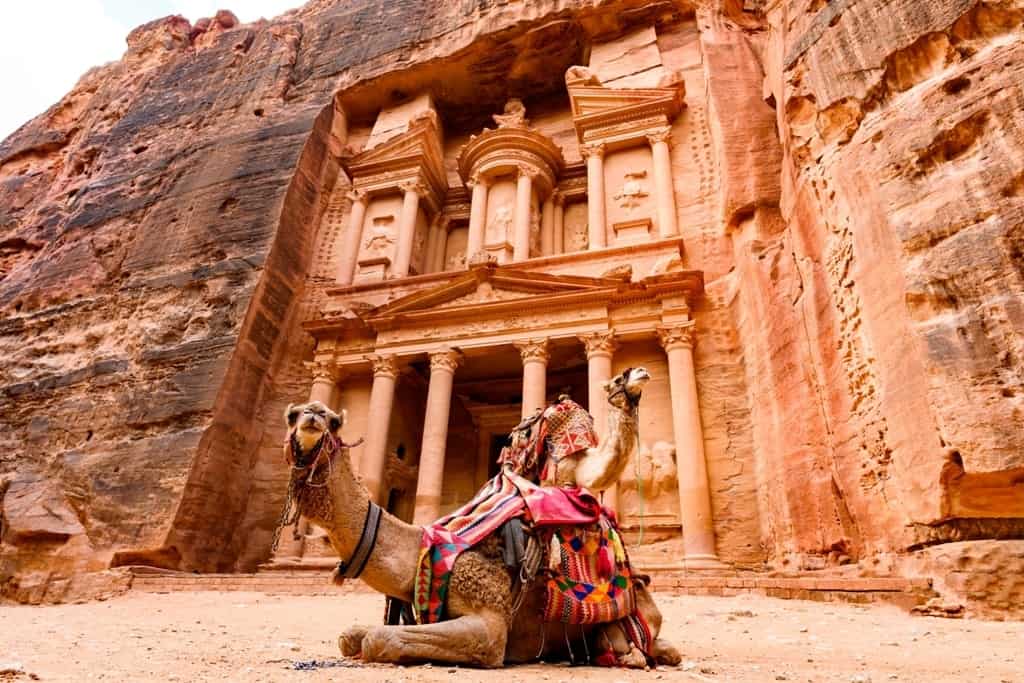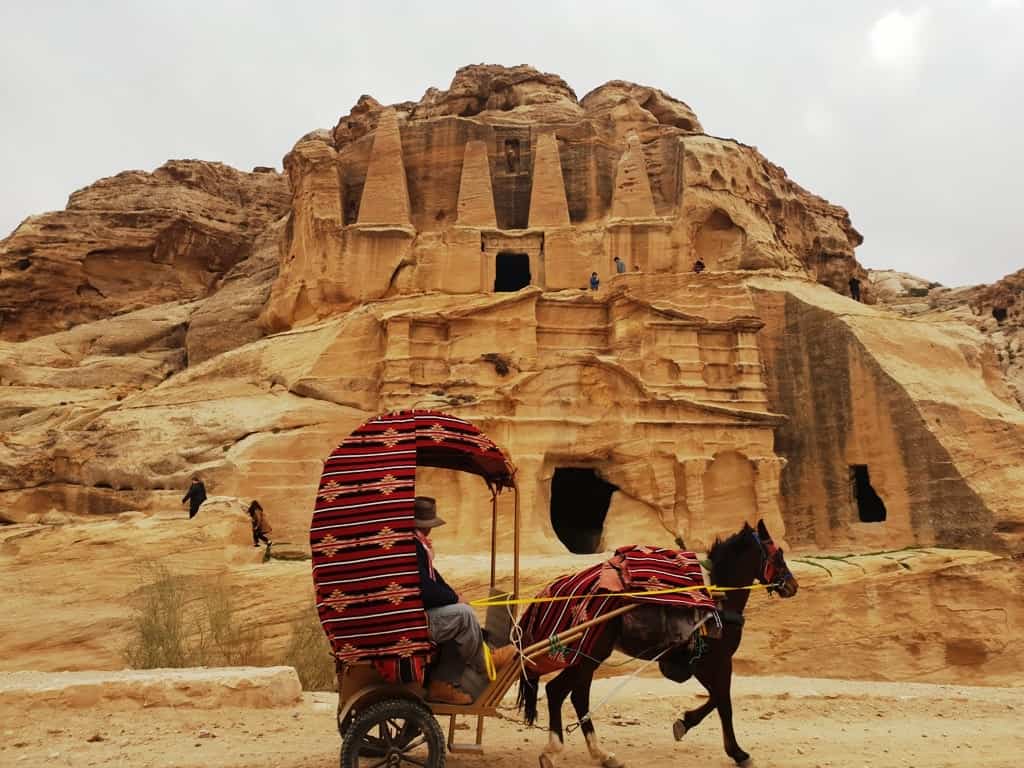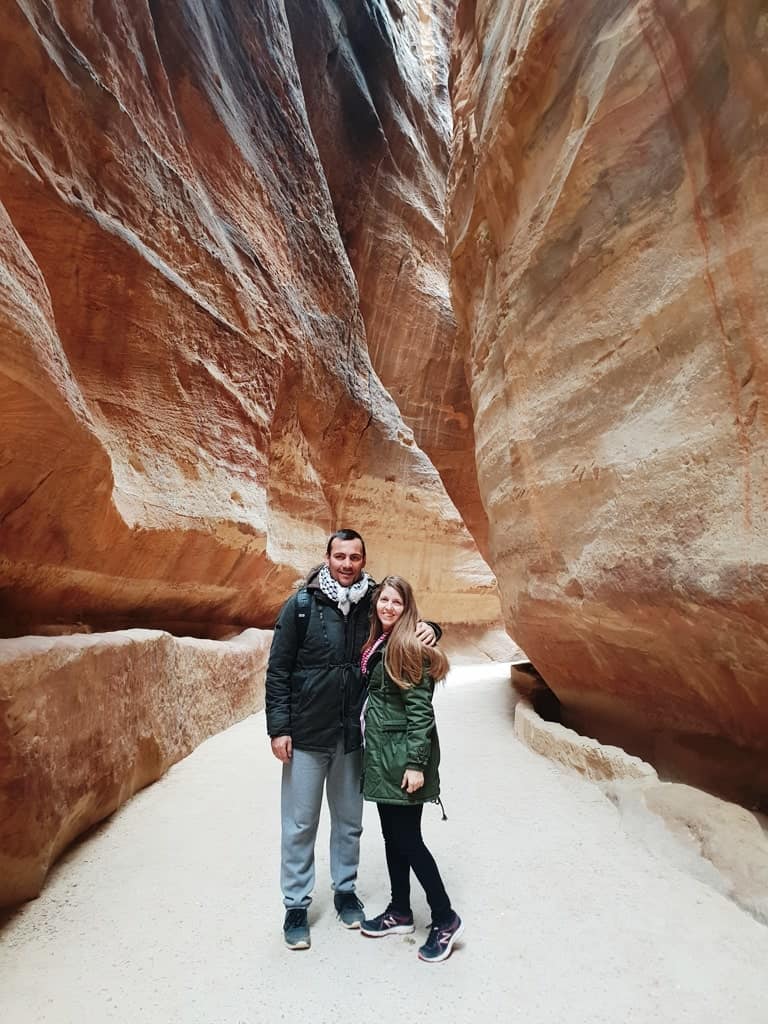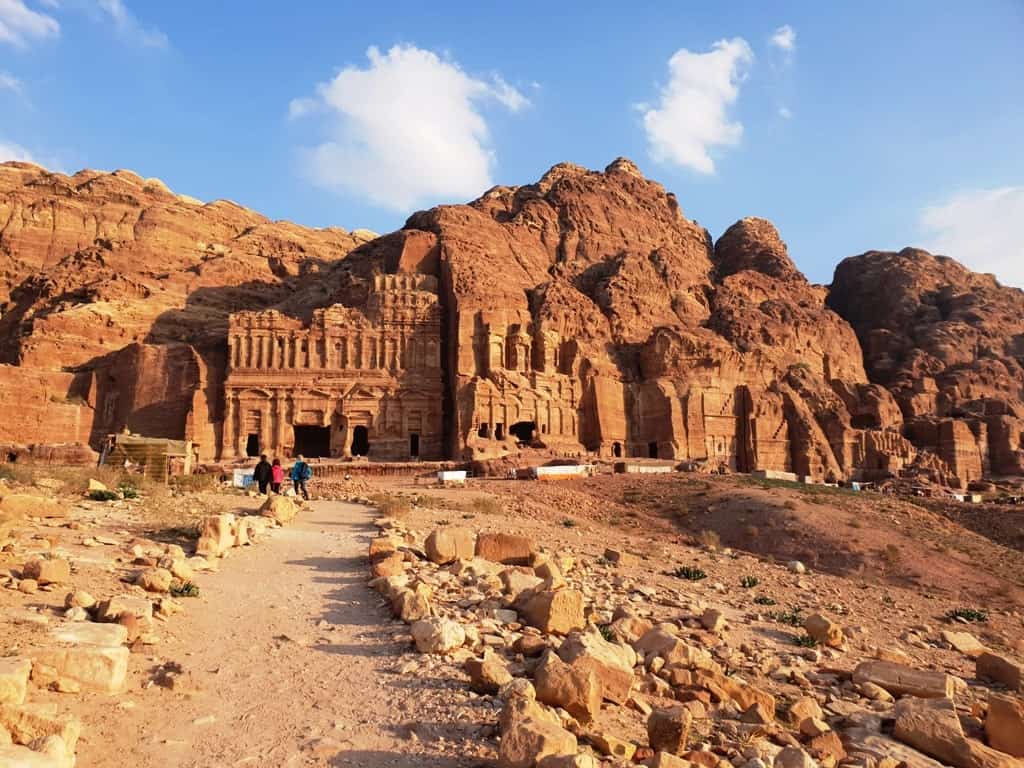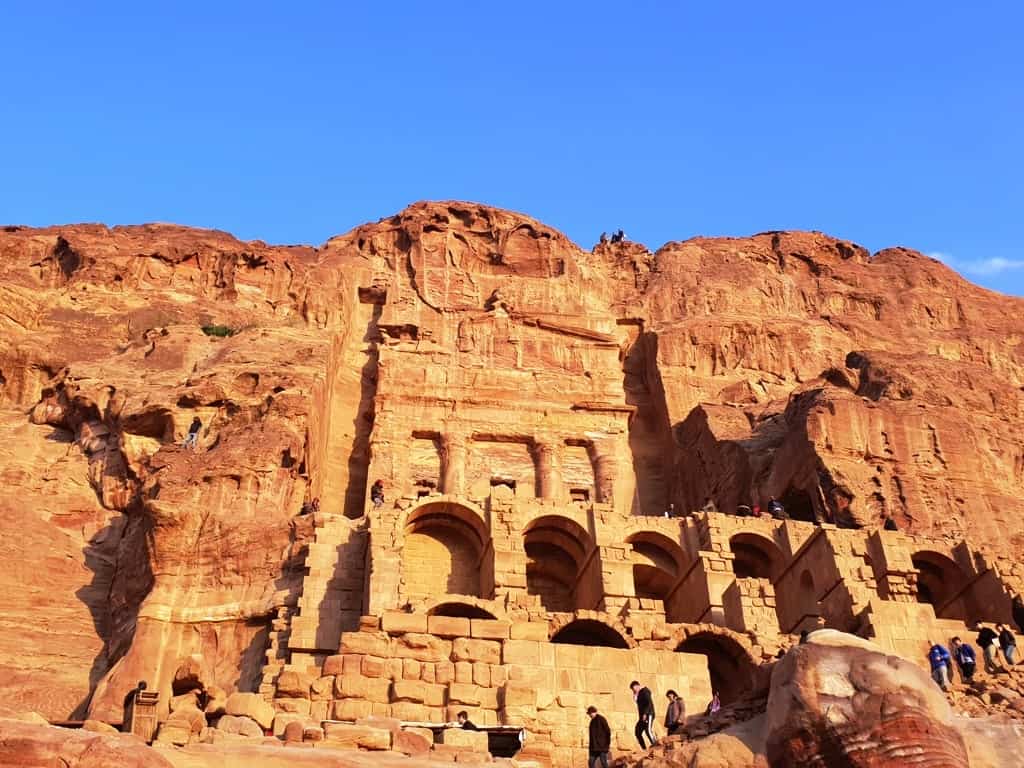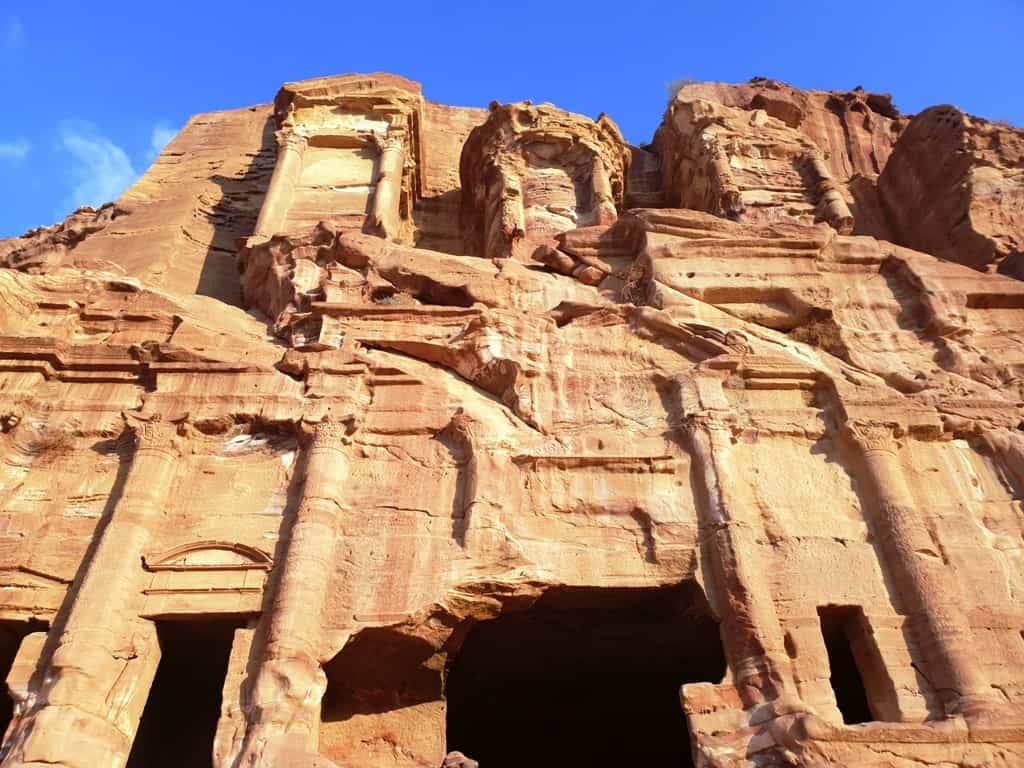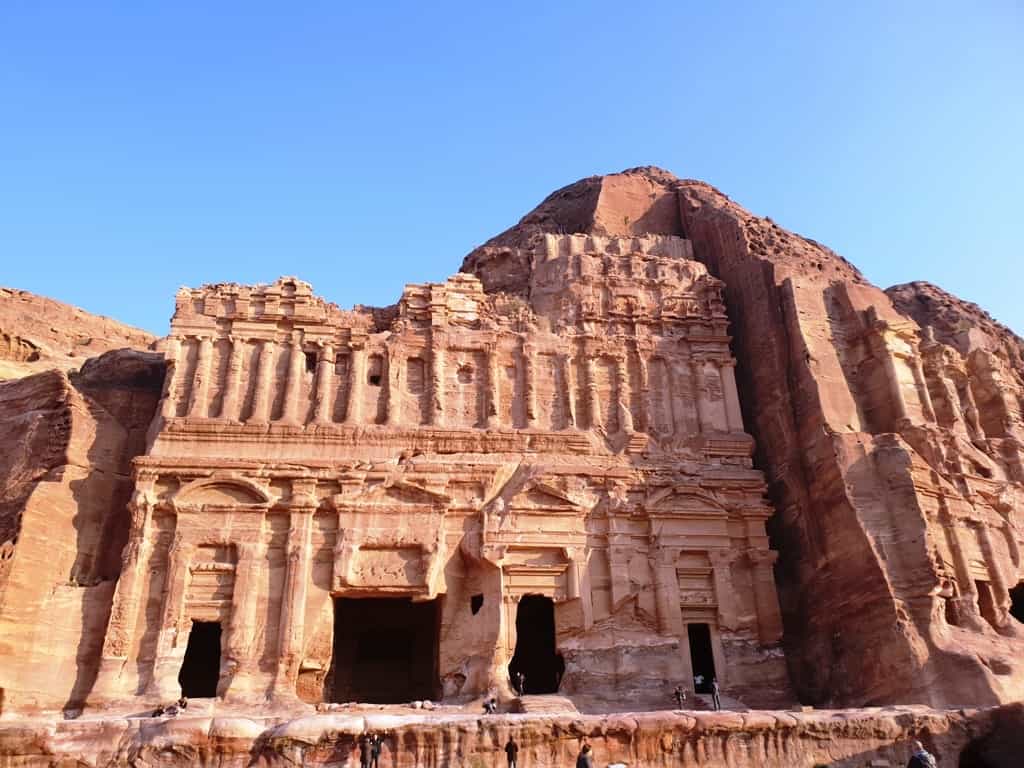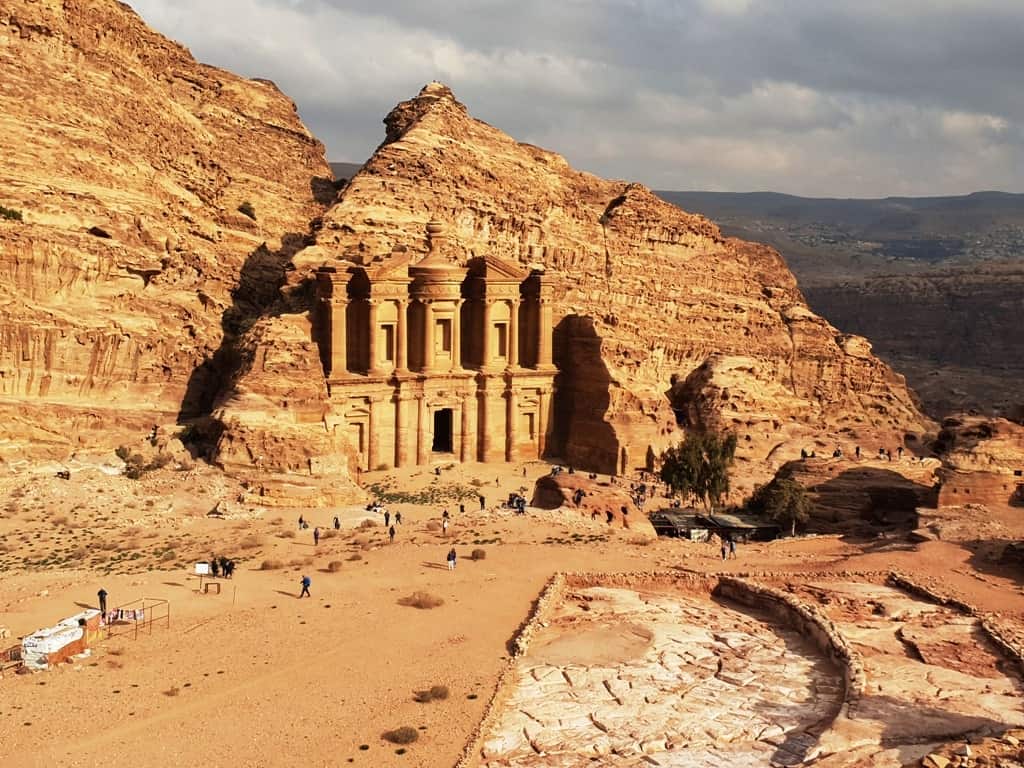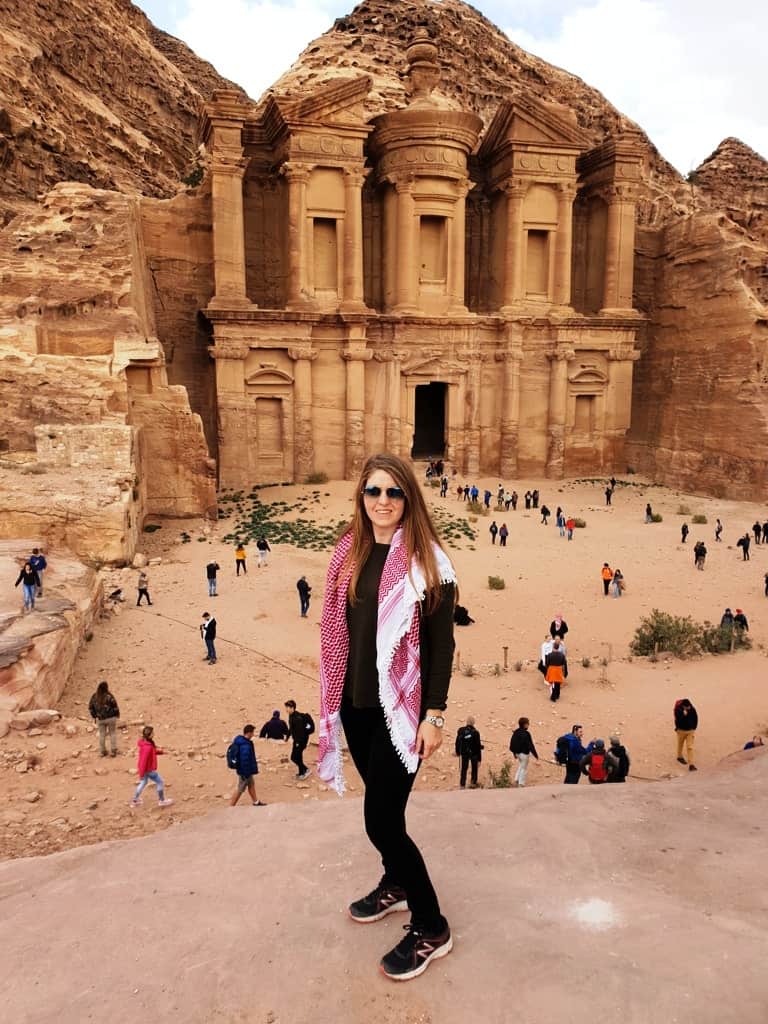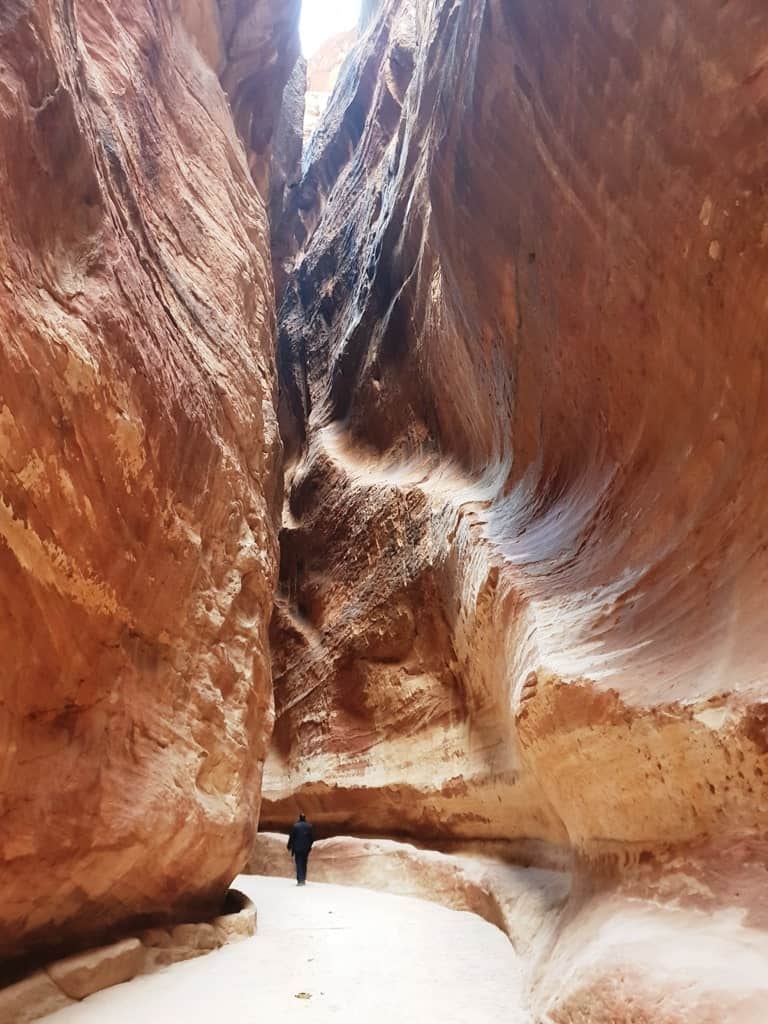This post is also available in: French
Petra, the Capital of the Nabataean Arabs and located in modern day Jordan, became a UNESCO World Heritage site in 1986. It had been lost to the outside world for centuries until 1812 when Joannes Burckhardt, a Swiss explorer, persuaded a Bedouin guide to show him the ‘’lost city.’’ It has fascinated travellers ever since, and today’s modern tourists flock there in huge numbers to see an archaeological wonder that is thought to have been built in the 4th Century BC.
The Nabataeans were nomads but established a trading base at Petra because of its proximity to the major trade routes of the day and its prosperity grew from the 1st Century BC. Roman and Byzantine both had a presence in Petra before an earthquake destroyed much of it in the 4th Century, leading to its eventual abandonment. For centuries, it was only the local Bedouin who knew of its location until 1812.
There are many facets to Petra from tombs in the mountainside to temples, streets and churches. Here are the highlights of the ‘’red-rose’’ city.
You might be interested in: The best time to visit Jordan.
Table of Contents
Things to do in Petra: A complete guide
1. Bab Al Siq
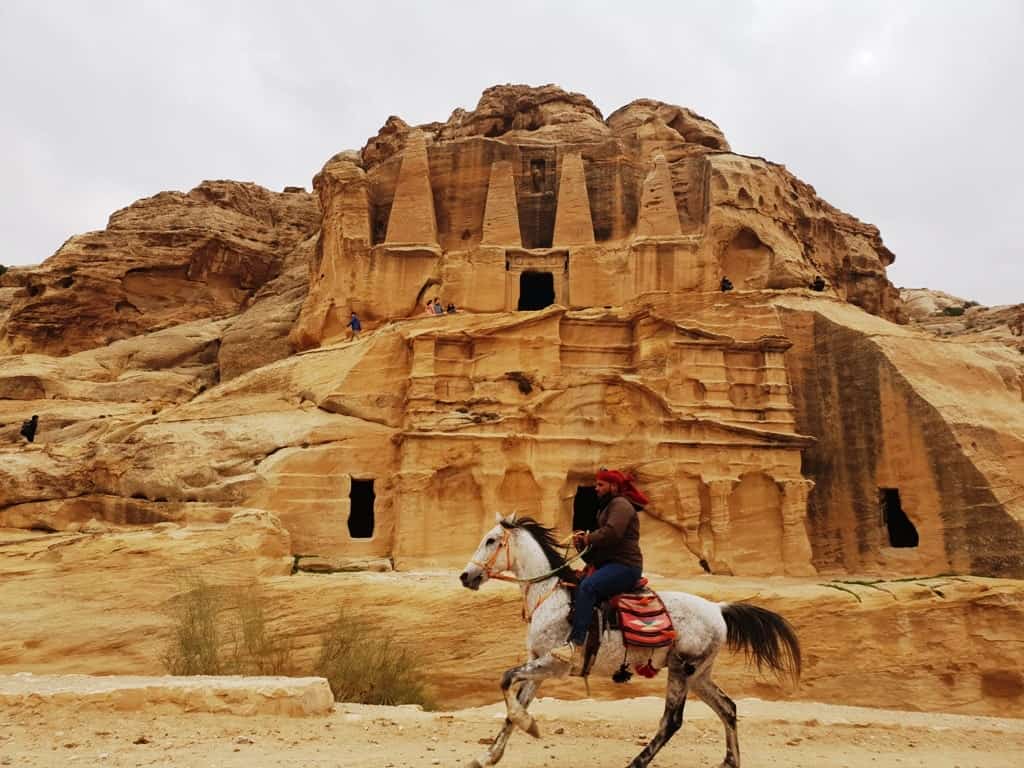
Your first sight of Petra is the initial gateway to the entrance. Three huge carved rocks announce your arrival with the 1st Century Obelisk Tomb and four pyramids your first photo opportunity.
The statue announces the burial chamber of five people and below you will see the banqueting hall, the Triclinium.
The inscription on the cliff-face in both Nabataean and Greek indicates a burial monument that was to be used by Abdomanchos and his family in the 1st Century.
2. The Siq
The Siq is the ancient main entrance into Petra, starting at the Dam and ending at the vault. The narrow gorge entrance is about 1200 metres long, of varying width up to 12 metres, and 80 metres high. There are canals either side of the Siq which carried water from the Wadi Musa into the City.
Pottery pipes carried that water along the right canal although on the left locals were able to filter water at various places along the way. The Dam prevented flooding and locals could also take their water from there. Water was regarded as sacred, hence the statues and sculptures of gods on the Siq.
3. The Treasury (Al Khazna)
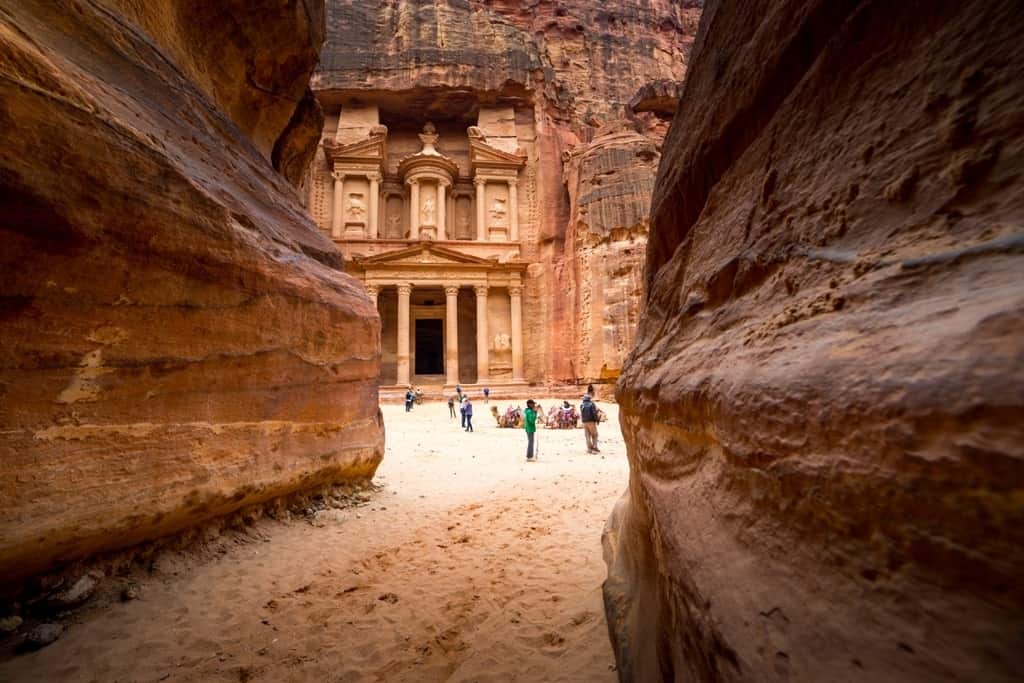
As you emerge from the Siq, the area opens to reveal an immediate highlight of Petra, Al Khazna. This magnificent facade is about 40 metres high with intricate decoration; friezes and figures and much more. Legend says that the Treasury held a pharaoh’s treasure.
It is thought to date back to the 1st century BC and has two floors 25 metres wide and a height of 39 metres high. There are three chambers and the most recent excavations have revealed a cemetery below Al Khanza which is variously thought to have been a temple or place for storing valuable documents.
4. The Street of Facades
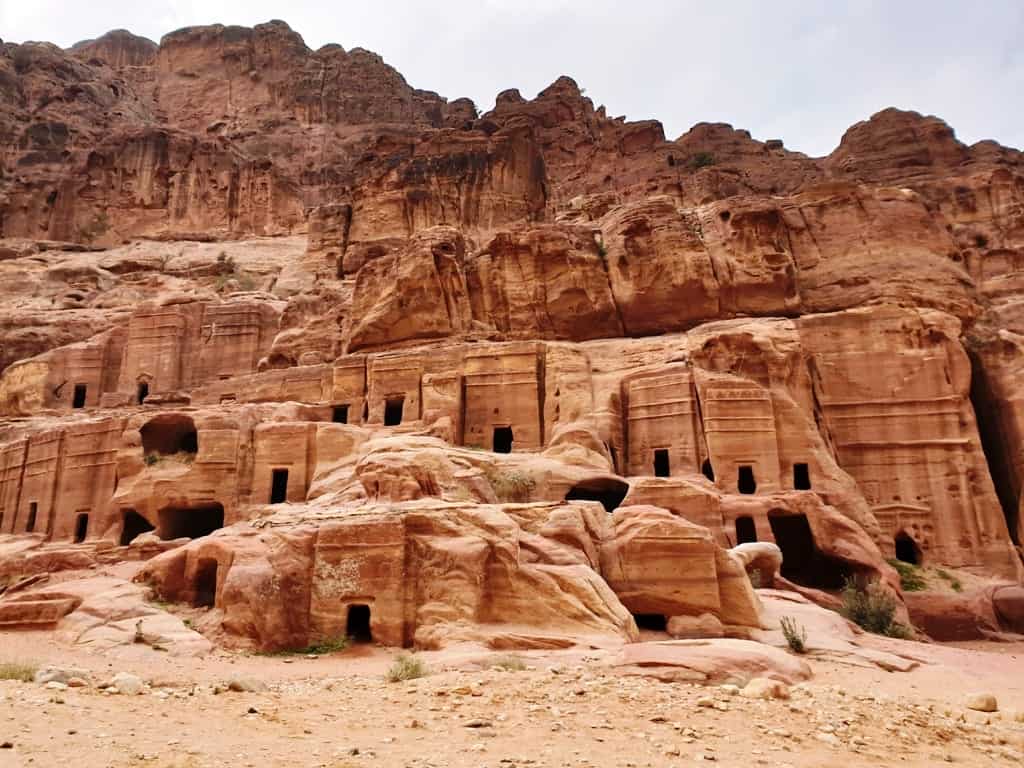
Close to the Treasury and the outer Siq you will find this Street and a row of Nabataean tombs carved in the cliff face. There are a number of decorated Nabataean burial interfaces though some have been destroyed by nature.
Historians believe that these are the final resting places of senior officials in Petra and even some royalty. The Anesho tomb, a man who was a minister of Queen Nabatiyeh Shaqilh II in the south looks over the external Siq. Anesho acted as a guardian of the throne for her son, Rabil II.
5. The Theatre
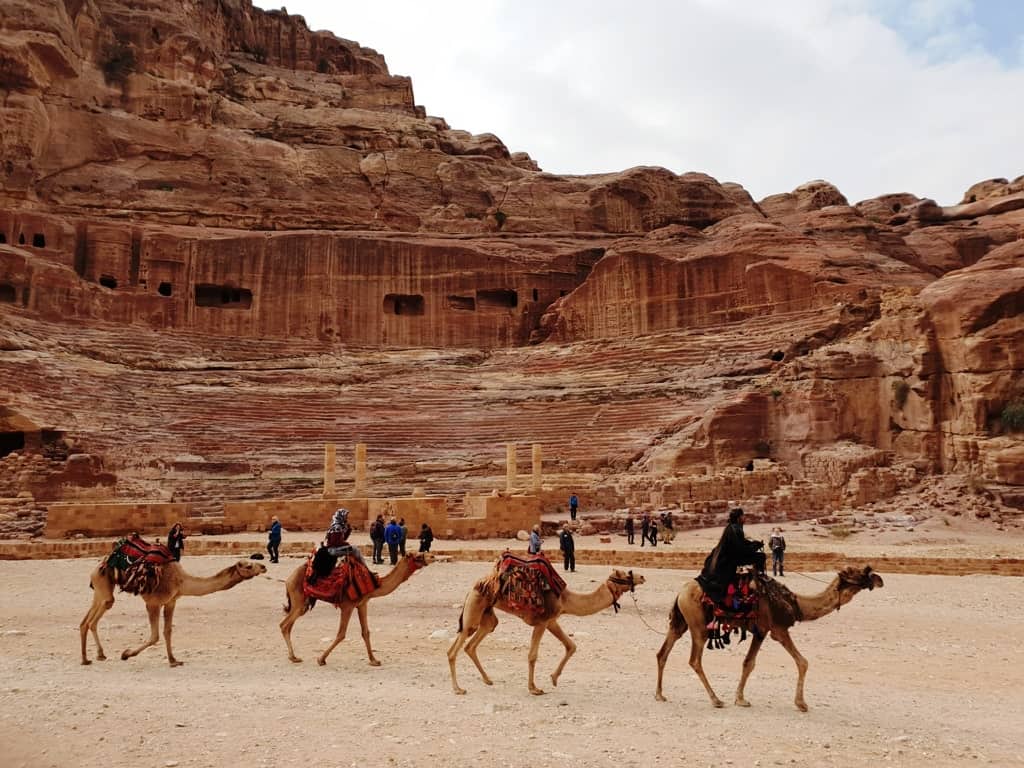
The ancient world had many huge amphitheatres but Petra’s with three rows of seats with passageways between held just 4,000. It is found below the High Place of Sacrifice and carved into the mountainside.
It dates back to the times of Aretas IV whose reign began in 4BC; he was king for three decades. The back wall of the stage was later rebuilt by the Romans.
6. The Royal Tombs
Several royal tombs are found within Petra and you are able to walk through them; you should do it:
- The Urn Tomb is thought to have been built in 70 AD and has a courtyard with colonnades either side. 3 niches are found high on the facade with small burial chambers and four centuries later they were adapted to become a Byzantine church.
- The Silk Tomb to the north is of a similar age and gets its name from the dramatic colouring of the stone. The dimensions of the interface are 11 metres by 19 metres with a central door and four columns.
- The Corinthian Tomb next door is larger; 27.5 x 26 metres and is made up of four rooms. It was used for cleansing with basins to front and side.
- The Palace Tomb is the largest of all; 49 x 46 metres with 12 columns, 4 gates and 18 pillars.
7. The Nymphaeum
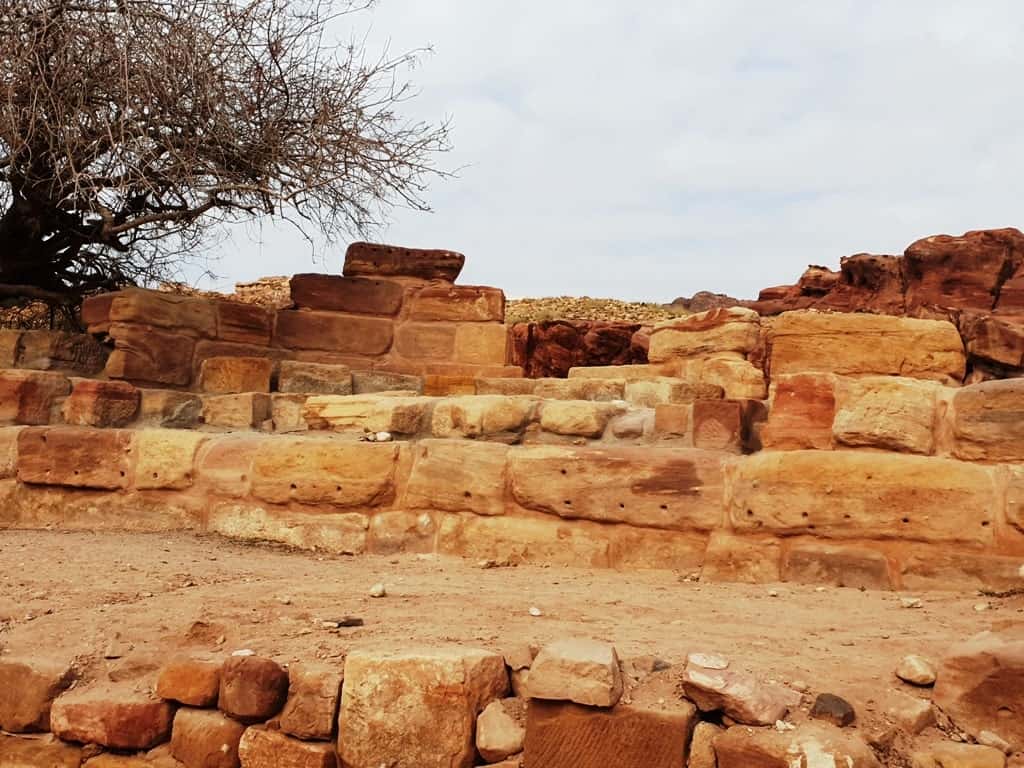
This fountain is on the right at the beginning of the Colonnaded Street close to Wadi Musa and Wadi al-Mataha. The water is from the other side of the valley and one of the features today is the 450 year-old juniper tree which provides much needed shade on a sunny day.
The Street, created by the Nabataeans and upgraded by the Romans, was one of Petra’s main shopping streets from the 3rd Century BC. Centuries later, the 4th and 5th Centuries AD, it was still important in Byzantine times.
8. The Great Temple
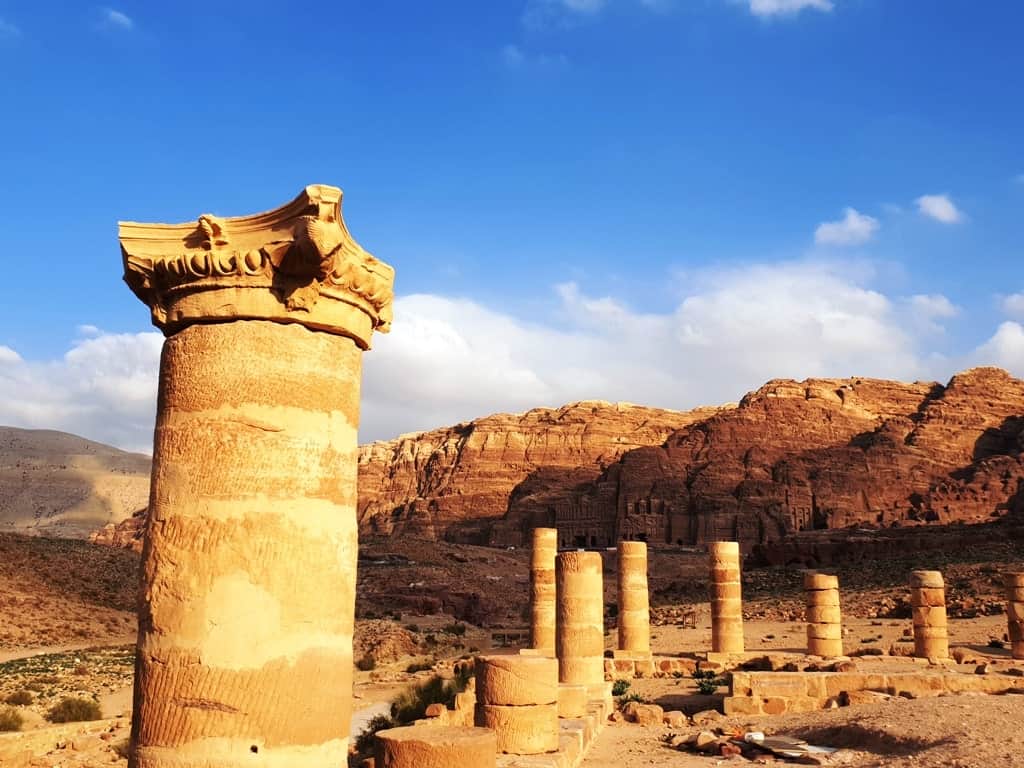
The “Great” Temple Complex is of archaeological and architectural interest; excavations by Brown University have been ongoing since 1993. The red and white exterior contrasts dramatically with the rose red stone of Petra. It has been dated at the end of the 1st Century BC and enlarged later in the 1st Century AD.
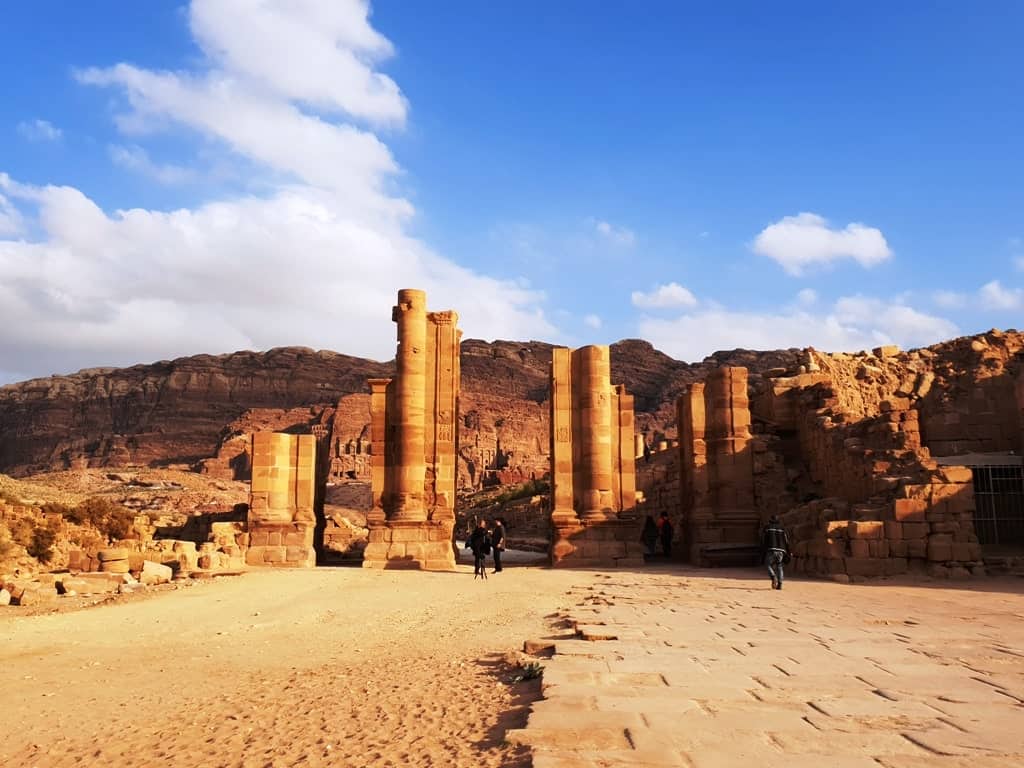
It is at the south end of Colonnaded Street and precinct covers over 7,500 square metres. A staircase leads to an open plaza with further staircases going to the temple itself with its four column façade and measuring 28 by 40 metres. Check on the Council Chamber in the precinct that could seat 600 people.
9. Byzantine Church
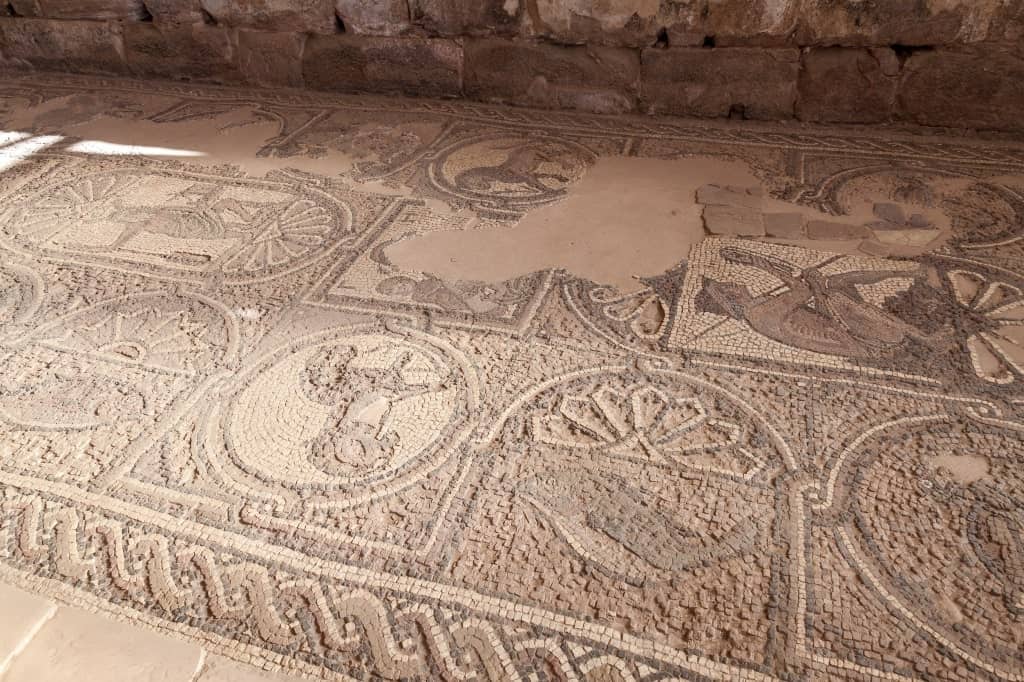
This Church appears to have been built on top of Nabataean and Roman ruins in about 450 AD which was after the decline of Petra had begun. There were subsequent revisions to the Church, the last around 600 but fire and then an earthquake put paid to any further work and the Church itself.
Discovered in 1990, excavations took place over the following years and in 1993, papyrus scrolls were discovered but to date, they have not been deciphered, partly due to the fire. What is known is that they are records of a local family. Excavations continue and one aspect of real interest is the quality of mosaics that have been discovered.
10. The Monastery
Petra’s monastery is an impressive size; 47 metres wide and 48 metre high. It was built in a similar style to the Treasury except for the house sculptures. Inside there are two benches and an altar to the rear. It is thought that it would have been used for religious meetings and has been dated in Rabel II’s reign in the 2nd Century AD. It was later used as a Christian Chapel by the Byzantines and crosses can be seen carved into the rear wall.
11. High Place of Sacrifice
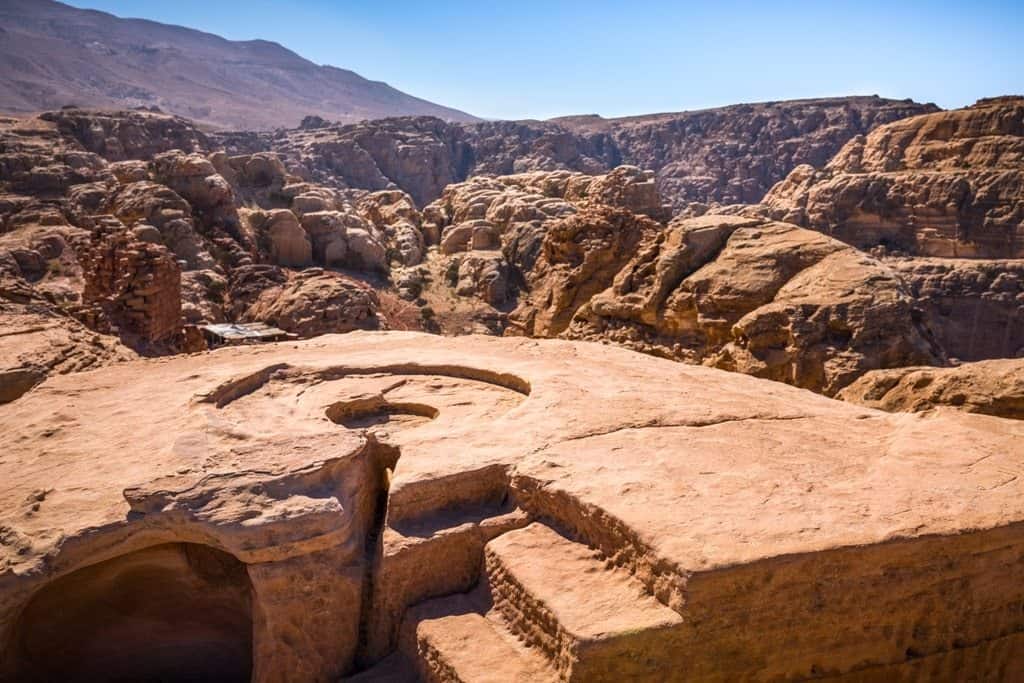
You will need to be prepared for a steep climb if you wish to visit the High Place of Sacrifice on the top of the Attuf Ridge. It will probably take about half an hour up the paths and stairways, which were built by the Nabataeans for their processions. At the summit, the views are spectacular. Two 7 metre obelisks 30 metres have been carved in the surface of the mountain probably representing two Nabataean gods, Dushara and Al-Uzza.
12. Petra By Night
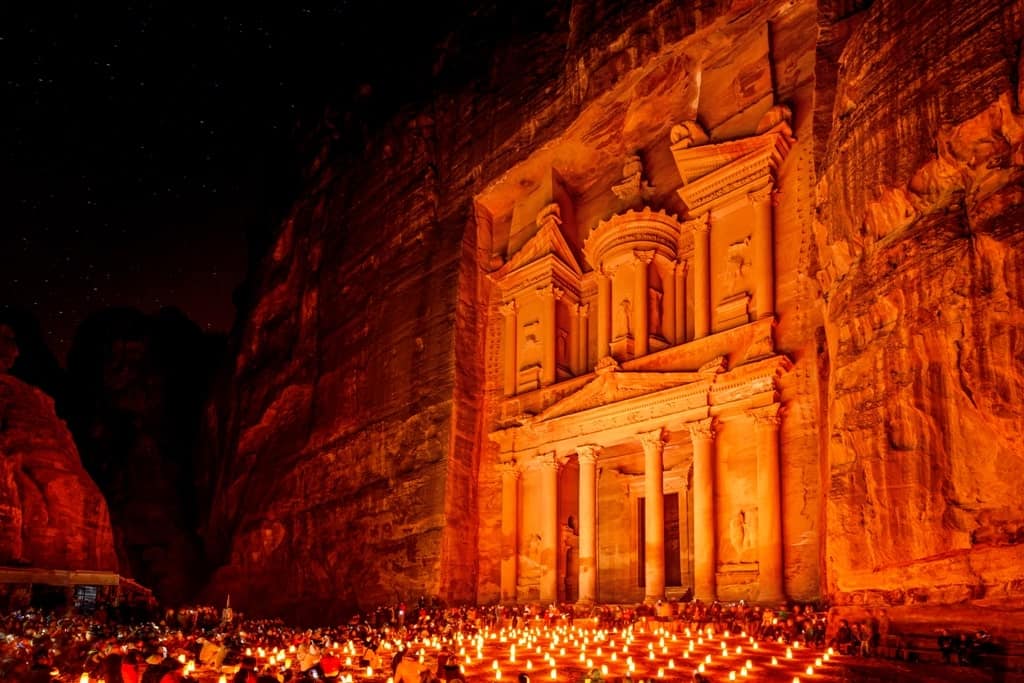
The Petra Night Show is wonderful, the city lit by candlelight. There are around 1,500 candles along the narrow gorge, the Siq to the Treasury. The tour lasts two hours and takes place three times a week, beginning at 2030 at the Visitor Centre and must be done strictly with an authorised guide.
Hiking routes in Petra
There are three popular hiking trails in Petra and the only constraint that you face if you are fit and full of energy is the time you have available:
- Starting at the Visitors’ Centre, you walk down the Siq where you will be in the shade until you reach the Treasury. From there, proceed down the Street of Facades to the Theatre, down the Colonnaded Street to the Byzantine Church, and perhaps climb to the Monastery. The round trip back to the Visitors’ Centre is around 8 kms and will take you up to 5 hours if you want to enjoy the sights along the way.
- Alternatively, instead of heading down the Siq, you can climb the rock to the left and get some lovely views. That will take around an hour and will give you a great view of the Treasury. The Trail then continues north west to the High Place of Sacrifice. Following the Attuf Ridge via Butterfly Valley (Wadi Farasa), you descend into the centre of Petra and the Great Temple with options either to visit the Royal Tombs or the Monastery. This hike is around 10 kms and may take you up to 8 hours.
- A third alternative is to enter from Siq al Barid, ‘’Little Petra’’, where you will see many different ruins and facades on the way to Wadi Merwan and the Monastery before taking the 800 steps down to the centre. This is also around 10 kms and should take around 6 hours.
The best time to visit Petra
Temperatures can be very high in Petra at certain times of the year. The most comfortable times for a visit are between March and May, or alternatively after temperatures start to fall a little between September and November. Between those months, temperatures are likely to be in the mid-30s making it a little uncomfortable for too much walking, and certainly extensive hiking.
After November, rains are possible and occasional flash floods are certainly uncomfortable and the water is cold. Incidentally, if you decide on the springtime, there is the bonus of wild flowers in bloom, adding to the already beautiful surroundings.
Check out: My 7 day Jordan Itinerary.
The cost of visiting Petra
You may book a tour to Petra which should include the admission, but independent travellers can buy a 1 day ticket for around $70. With so much to see, 2 day and 3 day tickets which are not much more expensive provide excellent value. Children under 12 incidentally as free.
The Visitor Centre will organise a guide at a further $55 for the day. If you want a horse and carriage, they are available for a further charge.
The Jordan Pass is an excellent way to see the Country’s highlights. It is valid for 12 months from purchase and covers 40 different attractions but lasts just 14 days once first used. There are several options but for comparison’s sake, a day at Petra as well as all the other highlights is around $100, excellent value.
You might also like: The best historical sites to visit in Jordan.
Tips on visiting Petra
Whatever your plans, you should aim to arrive early in the morning in Petra. That way, you will be avoiding the crowds that will gather during the morning. After passing through the gorge, the Siq, you will see the Treasury before the area is filled with people.
Even if you do not intend to take any of the interesting hikes, you will still have a moderate amount of walking to do so you should ensure you have comfortable shoes, ideally hiking boots which offer extra protection from ordinary footwear.
The sun will be strong at its height so you should take water with you, and perhaps a picnic, and certainly wear a hat with a brim and take suitable sunscreen as well. You should rely on your own legs and avoid taking a ride on a donkey or any other animal for that matter.
Petra has few equals. While it may be hard to imagine what life was like for the original inhabitants, it is clear that they possessed huge skills and that civilisation flourished there for many centuries. You nee to have moderate fitness to enjoy it to the full, and a little more if you want to see everything but it is certainly worth the effort to see one of the world’s true wonders.

